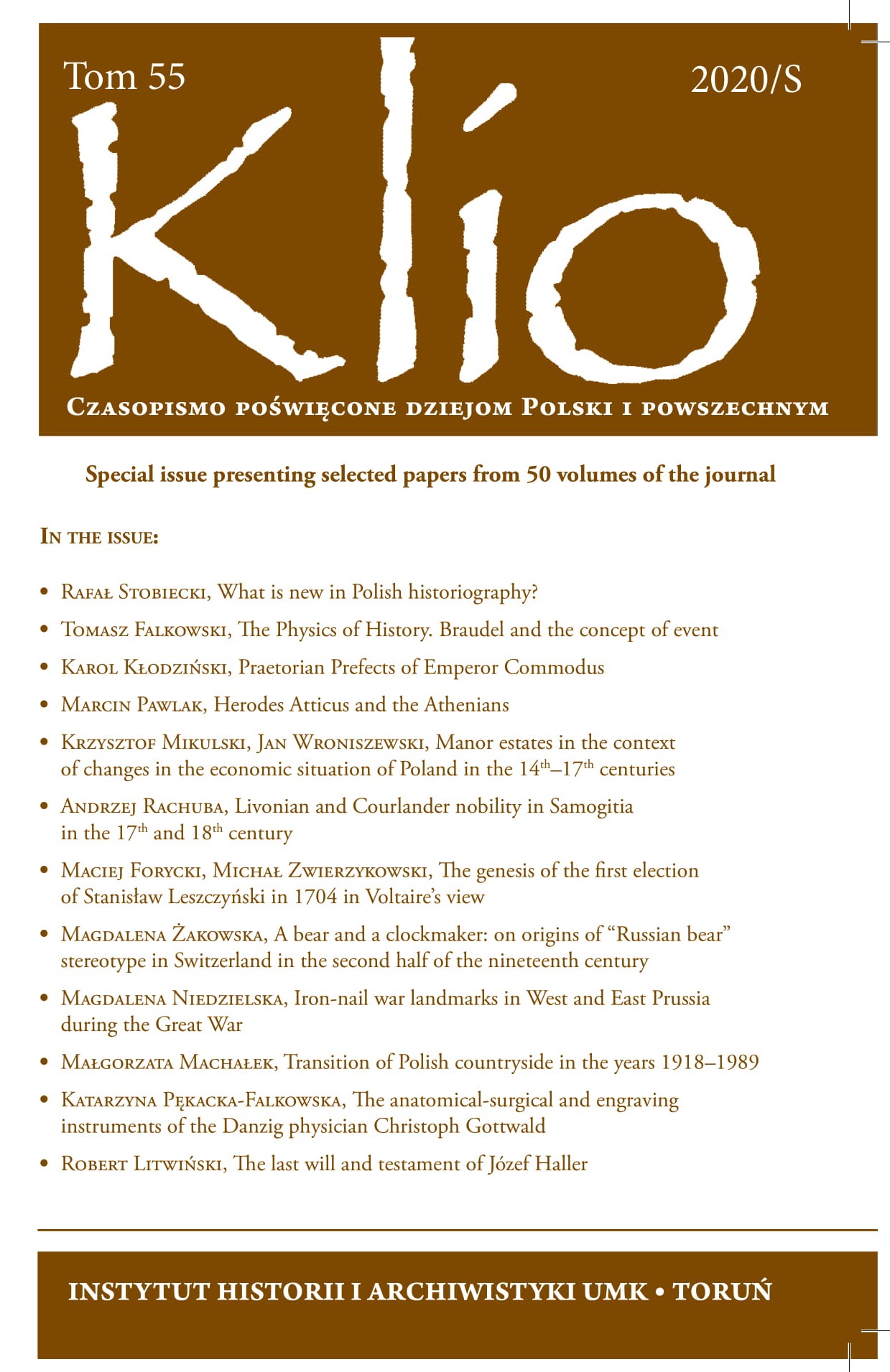Manor estates in the context of changes in the economic situation of Poland in the 14th–17th centuries
Manor estates in the context of changes in the economic situation of Poland in the 14th–17th centuries
Author(s): Krzysztof Mikulski, Jan WroniszewskiSubject(s): History, Economic history, Modern Age
Published by: Wydawnictwo Naukowe Uniwersytetu Mikołaja Kopernika
Keywords: manor estate; economic history; villain estate
Summary/Abstract: Considering “Folwark” (Manor) as one of components of an estate, the authors focus on its development and changes in form of its organization, against a background of a changing economic situation. They treat the 14th and the 16th centuries as a time of prosperity and the 15th, 17th centuries as a period of decrease in demand for agricultural products. Big “Folwark”, understood as an estate connected with a local market, emerged during the 14th c. mainly as a result of great land estates’ reorganization. Its concomitant was the gradual and equivalent removal of feudal rent’s point of gravity from a rent in money to labour (e.g. Lesser Poland). This was caused also by an insufficient supply of money in peripheral parts of Poland. A villein manor in the middle gentry’s estate appeared on the turn of 15th and 16th centuries as a result of peasant holdings’ crisis, as they were not able to sell their productsand get money to pay a rent, gradually being changed into a labour. It is concomitant was peasants’ aiming to make services lower by diminishing an area of tillage. The followingcorrelation can be noticed: the villein manor – “folwark” – developed faster in the regions less connected with the market and predominated by big rental peasant holdings. It wasdifferent in parts of Poland predominated by big rental peasant farms, situated in the territories of a greater demand for agricultural products. In regions connected with the market(e.g. East Pomerania) manors of the great landowners did not make use of villein services, but of a hired labour. The change of service forms from a money-rent to labour resultedfrom worsening of the sales conditions. The increase in both kinds of rent in the 16th c. was caused by a growth of peasants’ profits as a result of improvement in the economic situation in Poland, caused by an external demand for grain. The money-rent predominated in periods of prosperity and greater supply of money; the villein labour predominatedwhen the economic situation was not good. Regions connected with the Gdansk market developed in a different way than the rest of the country – they were predominated by peasant rental economy and hired manor; the last aimed to displace peasants from the selling market. The paper was originally published as Folwark i zmiany koniunktury gospodarczej w Polsce w XIV–XVII wieku, “Klio” 2003, vol. 4 (2), pp. 25–40.
Journal: Klio. Czasopismo poświęcone dziejom Polski i powszechnym
- Issue Year: 55/2020
- Issue No: Supplement
- Page Range: 137-154
- Page Count: 18
- Language: English

